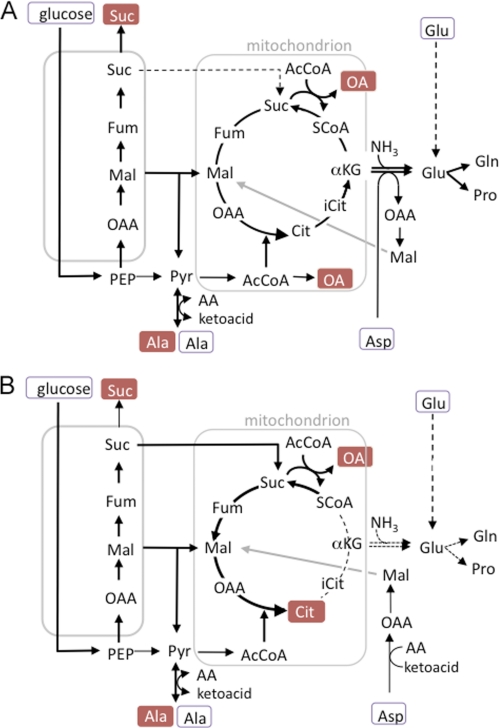FIGURE 8.
Predicted changes in metabolic fluxes in L. mexicana promastigote following inhibition of the TCA cycle. A, C4 dicarboxylic acids generated by succinate glycosomal fermentation and exogenous aspartate are used to replenish TCA intermediates, such as α-ketoglutarate that are removed for glutamate biosynthesis by reductive amination or transamination reactions. The glycosome contains transporters for malate, fumarate, and succinate, all of which could be transported to the mitochondria for TCA cycle anaplerosis (only transport of malate and succinate shown). Excess succinate is secreted. B, NaFAc treatment inhibits the mitochondrial aconitase resulting in the intracellular accumulation and secretion of citrate, with a concomitant decrease in cellular glutamate levels. Intracellular pools of glutamate can be restored by uptake of glutamate, but only when exogenous concentrations are high (dotted line). Other steps in the TCA cycle are maintained by the diversion of glycosomal succinate to the mitochondria and its conversion to succinyl-CoA (by acetate:succinyl-CoA transferase) or citrate. Abbreviations are as used in Fig. 1.

